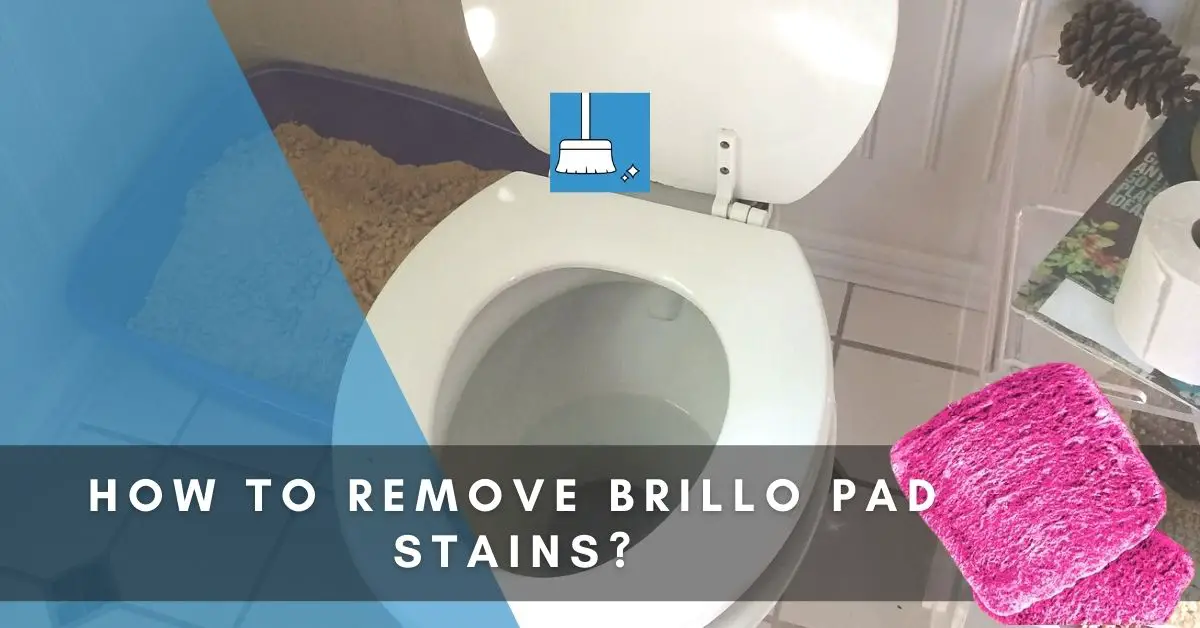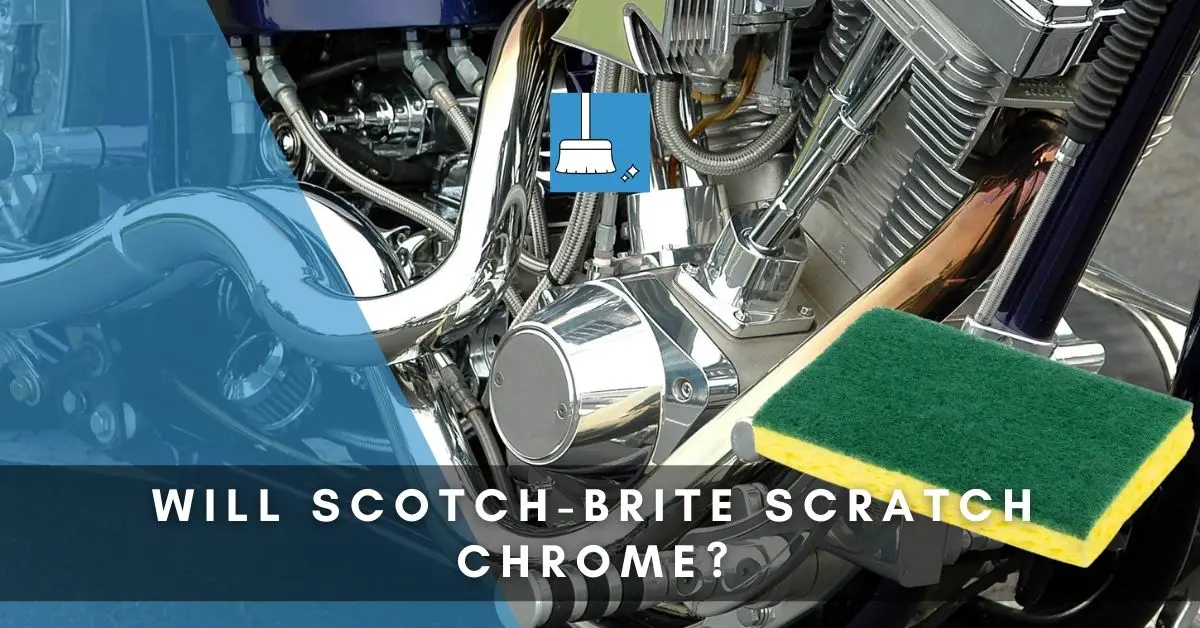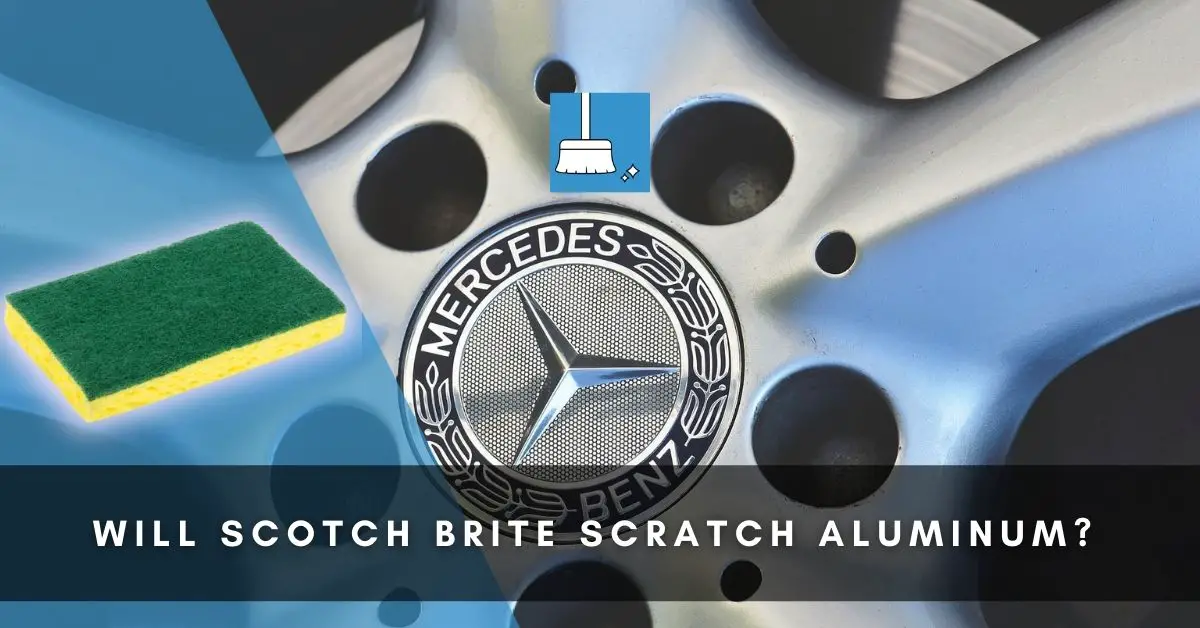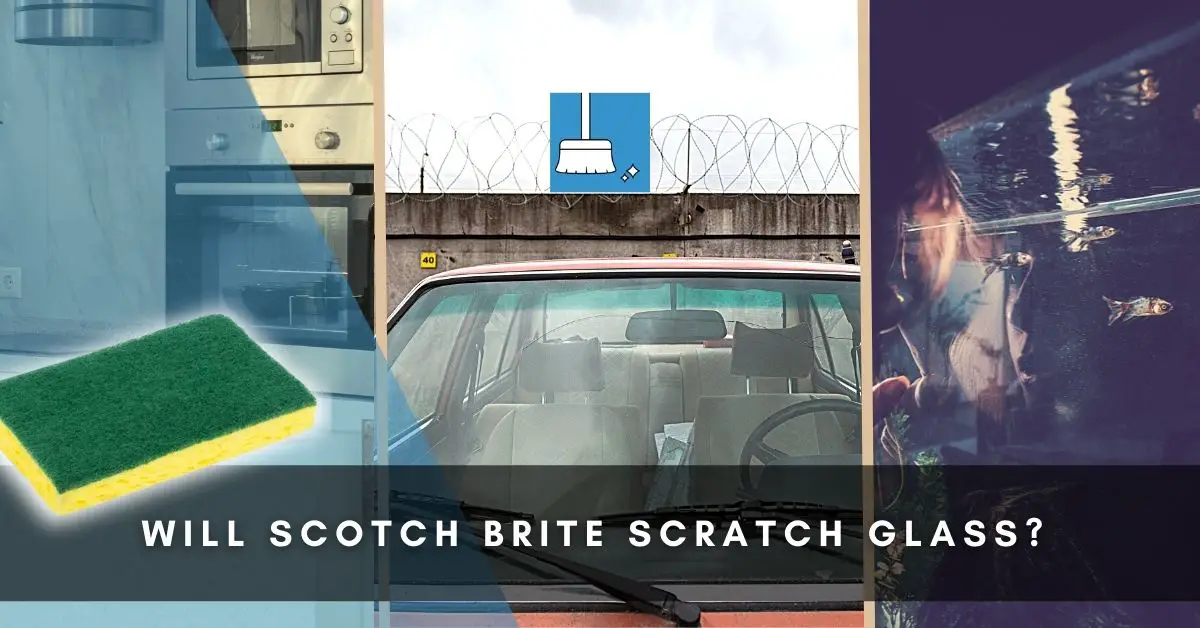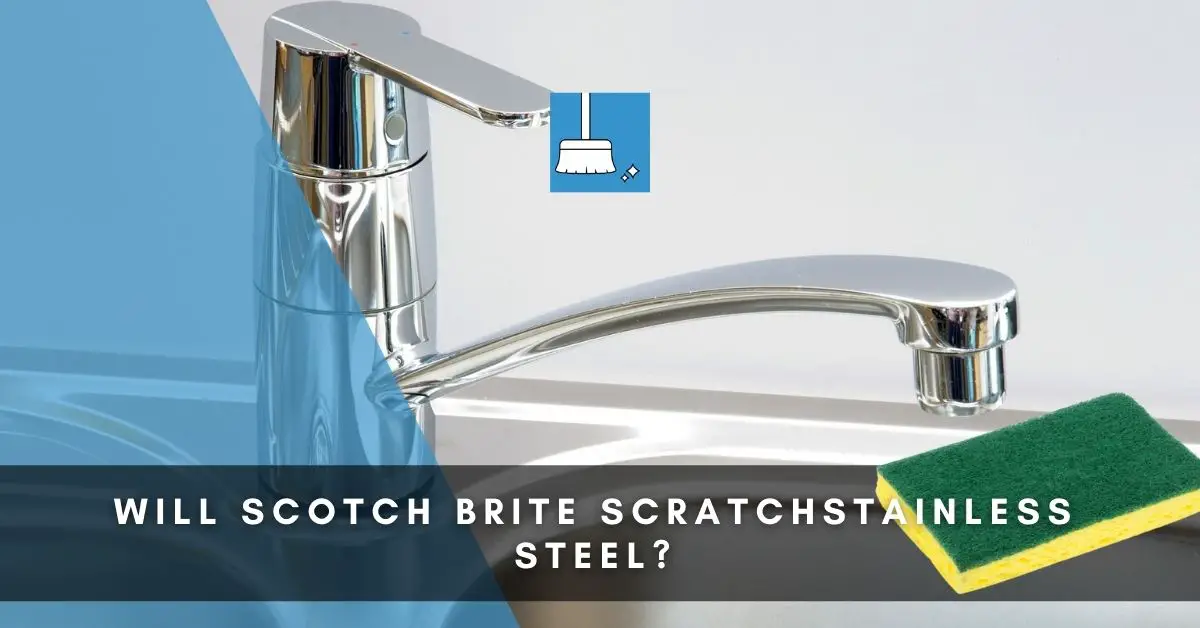Although we use abrasives like brillo pad as recommended, we still get after-use effects like stains or scratches on our toilet bowl or bathtub. This can be frustrating as it makes the home look ugly and exposes the surface for bacteria to grow.
Despite how effective the pad is, a lot of people complain of stains after its usage. So, how do you remove brillo pad stains?
In this article, we’ll be answering this question with some step-by-step methods for getting those scratches out.
How to Remove Brillo Pad Stains?
After using abrasives you can often see bathtub stains, metal scratches, and toilet bowl stains among others.
Removing Brillo Pad Stains on Bathtub (Vinegar & Baking Soda)
Bathtubs can be acrylic, fiberglass, enamel, or porcelain. It’s then important you know what your bathtub surface is to get the best cleaning tool for it.
Method 1
In this method, you will need a dash of vinegar and some baking soda.
Follow these steps below:
Step 1: Microwave one cup of vinegar for 90 seconds. After this, pour the hot vinegar all over the stained tub and sprinkle 4 Tablespoons of baking soda.
Step 2: Then use a scrub brush to spread the mixtures.
Step 3: Leave the mixture for 2-3 hours to work.
Step 4: Now get a clean dry cloth and a little elbow grease to wipe the bathtub. By now, the stains would have completely gone or would have dimmed. Repeat the process if necessary.
Alternately, you may use the following steps:
Step 1: Spread the baking soda generously on the stained spots.
Step 2: Use a soft scrub brush to scrub and spread the powder around.
Step 3: Add 1½ cup of vinegar to the baking soda and scrub the tub with this solution using your brush. Let the combination soak for 15-30 minutes.
Step 4: Scrub once more before rinsing.
Removing Brillo Pad Stains on Toilet Bowl
Toilets are mostly made of porcelain. And this can make it very likely to hold on to certain stains which appear as gray, red, or brown stains.
These stains are caused by mineral build and as a result of using brillo pads or using any other hard surface pad to scrub the toilet.
Method 1: Using Oxalic Acid
Bar keeper’s friend is a cleaning agent that contains oxalic acid and this can help to bleach and clean rust stains.
Step 1: Turn off the water supply of your toilet and flush to drain the bowl.
Step 2: Spread your liquid bar keeper’s friend over the toilet bowl (inside).
Step 3: Wait for a few minutes and flush the bowl. There you go, your bowl should be sparkling as new. Repeat the steps again if the stains still remain.
Method 2: Using Pumice Stone
Pumice stone is strong enough to remove stains but soft enough to not scratch your toilet bowl. Pumice stone has been proven to be an effective stain remover for porcelain and ceramic products.
However, you must be careful when using the stone so as not to use it to scrub off the toilet bowl paint.
Step 1: First, you have to reduce the water in the toilet bowl. Simply put off the toilet valve.
Step 2: Put on your gloves, and wet the pumice stone. Then, gently scrub the stained part in circular motions.
Step 3: While scrubbing, you will notice grey residuals on the surface of the bowl; don’t panic as this is a paste formed by pumice stone and the wet bowl.
Step 4: Carefully scrub through and remember to keep it circular as you go. Make sure, you scrub each affected spot carefully before moving to the next spot.
Step 5: After scrubbing is done, flush the toilet to see how much of the stains still need to be removed.
Step 6: Repeat the steps if necessary.
Method 3: Using Baking Soda & Vinegar
Steel wool may cause Rust Stains on your toilet bowls due to the metal coming in contact with water. These stains can be pink, orange, or brown in color. Since Brillo pads are made of steel wool and soap, it is likely to cause these stains.
Follow the below steps to get rid of these stains:
Step 1: Pour 1 cup of baking soda into the toilet bowl. Add two cups of vinegar and mix with the baking soda.
Step 2: Use your toilet brush to spread the solution all over the bowl and scrub.
Step 3: Let the mixture sit in the toilet bowl for about 10 minutes.
Step 4: After 10 minutes, again scrub through the steel wool marks in your toilet bowl. You may need to scrub extra hard and/or repeat the steps if necessary.
Method 4: Using Lemon Juice
Interestingly, another cheap but highly effective thing we can use to remove steel wool marks from our toilet bowl is lemon juice!
Lemon or lime juice has citric acid in it, which when comes in contact with Rust (Iron Oxide), dissolves it and hence is of immense benefit in getting rid of rusty stains on toilet bowls caused by metallic abrasives such as brillo pads.
Now, let’s look at how to use lemon juice to remove steel wool marks from our toilet bowl.
Step 1: Turn off the water supply valve of the toilet ( This is usually located at the bottom left of the toilet bowl).
Step 2: Use a dry clean cloth to wipe the areas with steel wool marks on them.
Step 3: Gently squeeze the lemon juice on the stained areas and use the lemon to rub it over that and the rest of the area. Don’t mix any acid with this. You may sprinkle laundry detergent over the affected areas.
Step 4: Let the juice sit for 20-30 minutes.
Step 5: Use your toilet brush to scrub the toilet bowl and then flush off the juice. Repeat the steps again if necessary.
Method 5: Using Lysol
Lysol is a powerful toilet bowl cleaner that helps to remove not just color stains from porcelain but also, get rid of thick scratches in the toilet bowl.
This cleaner can help remove metal scratches by following these steps:
Step 1:Put on your latex or rubber gloves and turn off the toilet water supply valve (Generally, the valve is installed behind the toilet).
Step 2: Flush the toilet and try to reduce the water in the bowl until you’re down below the level of the scratches.
Step 3: Spray your Lysol toilet power bowl cleaner on the scratched spots and let it sit for 15 minutes.
Step 4: The above step will immediately lessen the scratch and when this is done, grab a soft scrubbing pad and scrub the scratched areas. Alternatively, you may use your toilet brush to scrub.
Step 5: Turn the toilet valve back on and flush the toilet bowl.
What Will Not Scratch Your Toilet?
You can have a smooth toilet surface or you can have a rough surface after using brillo pads.
Sometimes it can be a trade-off as a Brillo pad can give your toilet that healthy look you need and at the same time, it can scratch the toilet. Here are a few options that you can use to clean your toilet bowls without the worry of scratches:
1- Brillo Estracell is a pad with a wedge edge and with protective properties to leave no scratch on the exterior part of your toilet bowl.
2- Scotch Brite Toilet Scrubber is designed to remove stains even from under the rims. This is an effective scrubber specially designed for delicate surfaces (as well as other surfaces) to remove rust and hard water stains.
Final Thoughts!
Using steel wool pads such as brillo should not be used to clean toilets or bathtubs as it is not their intended purpose.
We have listed the step-by-step methods to get rid of the scratches on your tubs and toilet bowls caused by brillo pads.

